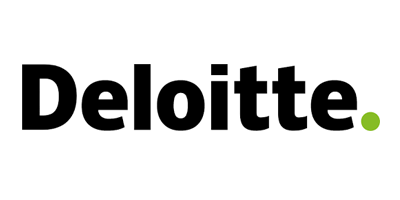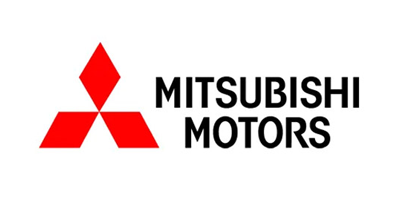

Hazmat Suits Market by Safety Standard (Level A, Level B, Level C, and others), Application (Chemical Waste, Hazardous Materials, Infection Control & Biohazard, and Others), and End-Use (Oil & Gas, Construction, Mining & Metallurgy, Manufacturing, Healthcare, and Others) and Region - Market Size, Share, Trend, Forecast, Competitive Analysis, and Future Outlook: 2022-2028
Base Year: 2021
Historical Data: 2016-2020
Market Highlights
The global hazmat suits market was valued at US$ 9.0 billion in 2021, and it is projected to increase at a compound annual growth rate (CAGR) of 6.9% from 2022 to 2028, reaching US$ ~12.48 billion.
Governments all across the world were forced to enforce strict lockdowns and social seclusion in order to halt the COVID-19 outbreak. Factories were closed and just a fraction of the labor force was allowed to work. This led to a significant disruption in the hazmat suits market for industrial-grade hazmat suits, both in terms of supply and demand. The hazmat suits market experienced a little decline. The decline in the hazmat suit industry last year was largely caused by disruptions in global production and supply chains. However, during the past year, there has been a noticeable increase in demand for hazmat suits, especially in the healthcare sector. These clothes are necessary for medical personnel caring for infected patients in isolation units. Hazmat suits have unexpectedly gained popularity as a result of circumstances such as these, particularly in the global healthcare sector.
Improvements in the worldwide hazmat suits market are coinciding with growth in the subject of worker safety. Hazard suit demand across multiple industries is a major sign of this market's growing features. In addition, the global need for hazmat suits has been greatly boosted by the existence of an ever-expanding chemical industry. Industrial decision-makers go to considerable lengths to ensure that workers and employees have a safe and comfortable place to work. The volatile operations of the mining and chemical sectors have created enormous prospects for hazmat suits market expansion. Consequently, it is expected that in the upcoming years, the global hazmat suits market would see an increase in its revenue index.
Hazmat suits have unexpectedly gained popularity as a result of circumstances such as these, particularly in the global healthcare sector. Any job that requires personnel to be in hazardous situations or around risks needs personal protection equipment, or PPE. Personal protection equipment, also referred to as protective gear or safety gear, is any article of clothing or piece of equipment that a person wears to protect themselves against risks specific to their place of employment. Protective gear usually offers safety in the workshop against physical, chemical, radioactive, biological, mechanical, electrical, and other hazards. PPE in the form of a whole-body impermeable suit worn to defend against dangerous chemicals is called a hazmat suit.
As stated in Section 1910.132(h)(1) of the Occupational Safety and Health Administration's (OSHA) fundamental standards for personal protective equipment (PPE), employers are required to grant their employees unrestricted access to all PPE as well as other protective equipment. These days, personal protective equipment is widely available and is utilized to improve worker workplace safety. Among these areas are protection for the skin and body, hearing, eyes, and respiratory systems.
In a similar vein, OSHA has set regulations mandating the wearing of hazmat suits by workers performing tasks that could expose them to hazardous materials. These regulations have led to a notable increase in the demand for hazmat suits. The implementation of strict safety requirements in a number of industries is expected to drive the growth of the global hazmat suits market over the projected period.
Recent years have seen a number of directives and investments in the sector that should expand the hazmat suits market as a whole. Among them are:
• The usage of protective gear, including helmets, breathing devices, safety garments, and other items, has shown to be quite successful in preserving worker safety. It also acts as the last barrier of protection against harmful substances, radiation, intense heat, and other dangers. It is projected that the launch of better items that are easy to use and comfortable to wear would quicken market expansion. Strict government laws, increased worker safety concerns, a substantial growth in demand from a range of end-user industries, as well as large investments in R&D, are all contributing to the surge in demand for improved protective gear.The technology for single-use hazmat suits has advanced significantly in recent years; the materials used to create these suits are now stronger, lighter, and more resistant to a wide range of hazardous chemicals and other compounds. Modern throwaway suits weigh a lot less than their reusable counterparts, which allows the user to feel much less strain physically. The suit's capacity to transmit sound is also improved by the thinner materials, improving interaction and situational awareness. These advancements are expected to hasten the global hazmat suit market rise throughout the projected year.
Market Segment Analysis
Based on application, end-use, safety needs, and geographic location, the hazmat suits market is segmented. The application section covers things like chemical waste, biohazard and infection control, hazardous materials, and more. Over the course of the anticipated period, the infection control and biohazards segment is expected to increase at the fastest rate. The use of hazmat suits for controlling harmful infections and handling biological waste is also covered in this section.
Based on safety requirements, the hazmat suits market is separated into several categories, including Level A (Type 1), Class B (Types 2 and 3), Class C (Type 4), and others. Level B is the largest segment of the market.
Geographically, the hazmat suits market is split into four groups: North America, Europe, Asia-Pacific, and the Rest of the World. In 2020, the North American hazmat suit market dominated the global market, and it is expected that this trend would hold true for the duration of the forecast period. It is expected that the Asia-Pacific market will grow considerably. The primary drivers of the market, according to estimations, would be the growing economies of the Asia-Pacific area, including China and India. Hazardous material suits are expected to become more and more necessary in this area as transportation and construction activities grow.
Key Players
The market for hazmat suits is very competitive. The state of the sector and government assistance have a direct impact on the companies' growth. The quality and penetration of these companies' hazmat suits in target and emerging markets set them apart. Additionally, a few recent large mergers and acquisitions in the sector have had a big impact on the competitive dynamics. As an illustration:
• The World Nuclear Association states that the United States is the world's largest producer of nuclear power, producing over 30% of the world's nuclear electricity. Furthermore, the US Energy Information Administration reports that as of June 18, 2019, there were 59 commercial nuclear power facilities with 97 nuclear reactors operating in 29 US states. The World Nuclear Association projects that nuclear power stations produced 2,553 TWh of energy in 2020, a decrease from 2,657 TWh in 2019. Seven years prior to 2020, more electricity was produced through the usage of nuclear energy. The top three countries that use nuclear power reactors to produce the most electricity are the United States, China, and France.
These mergers and acquisitions have had an impact on the competitive landscape as a whole. The leading companies in the hazmat suit market are as follows:
Kimblery-Clark Enterprises; 3M Corporation; Drägerwerk AG & Co.; Kelelan Industries Inc.; Alpha Pro Tech Inc.; Dupont Inc.; Honeywell Inc.; Halyard Health Inc.; Msa Safety Inc.; Ansell Inc.; Sioen Industries Nv.
Hazmat Suits Market Scope:
| Report Data | Hazmat Suits Market |
| Hazmat Suits Market Forecast Value 2028 | 12.48Billion |
| Hazmat Suits Market CAGR 2022 - 2028 | 6.9% |
| Hazmat Suits Market Forecast Period | 2022 - 2028 |
| Hazmat Suits Market Base Year | 2021 |
| Regional Scope | North America, Europe, Asia Pacific, South America, and Middle East & Africa |
| Key Companies Profiled | Kimblery-Clark Enterprises; 3M Corporation; Drägerwerk AG & Co.; Kelelan Industries Inc.; Alpha Pro Tech Inc.; Dupont Inc.; Honeywell Inc.; Halyard Health Inc.; Msa Safety Inc.; Ansell Inc.; Sioen Industries Nv.. |
| Key Segments | By Safety Standard By Application By End-Use Industry By Region |
| Report Coverage | Market Sizing, Market Forecasting, Market Dynamics, Market Trends, Market Development Analysis, Market Share Analysis, Regional Analysis, Competitive Positioning, Competitive Benchmarking, Competitive Landscape, Company Profiling, Regulation Analysis, etc. |
Get Your Report Customized
Further segmentation of the market on the basis of type, application, end use, product, technology, method, process and any other segment depending on the market
Segmentation on the basis of any specific country or region
Any segment can be classified on the basis of application
Application segment can be further divided on the basis of companies
The companies profiled are not limited, we can incorporate additional companies of your choice
We can split the company market share on the basis of product, application and region
Report can be prepared for any specific country/region/segment
Customers can be added on the basis of regions and countries
Choose License Type
Get in touch with us
Why choose us
Proactive
We manage our resources 24/7 to identify issues and address them before they become problems
Quality & Reliability
We are committed to providing reliable and highly accurate data with an excellent quality control system
Global Outreach
6 Major regions and 40+ countries level analysis accomplished
Competitive Pricing
Our pricing strategy is highly competitive in the market, without compensating on the quality and the timeline of project delivery
UP TO 30 % OFF
Single User License
10% OFF
Team License
15% OFF
Corporate License
30% OFF
Book before: 31st May 2024
Some Facts About The Research Intellica
800+
Reports Published Per Year
2500+
Consulting Projects till date
125+
Fortune 500 Clients
1600+
Analysts and Contract Consultants


































